These are the clearest ‘spyshots’ of the BMW i3 yet, and that’s because they’re official photos released by BMW. Like the spyshots we’ve featured before, the two cars here are different – the orange car is a regular EV version of the i3 while the silver car has two fuel lids, which point to a range extended version of the car.
The 3,999 mm long BMW i3 is built on the LifeDrive platform, which we covered in 2011. In the i3, it has a wheelbase of 2,570 mm. One part of the platform called the Drive area contains all the eDrive components such as the electric motor, the electronics and the high voltage lithium ion battery, while the passengers sit in a lightweight carbon fibre reinforced passenger cell which is the Life part. As the motor sits at the rear axle driving the rear wheels, no centre tunnel is necessary.
Because this is a new platform that’s designed to contain EV components instead of trying to force the differently shaped batteries and motors into a platform designed to contain a combustion engine and a fuel tank, the positioning of the different components can be optimum, both maximising passenger space as well as ensuring weight is distributed low in the car in a perfectly balanced 50:50. BTW, remember those narrow but large wheels that we saw on the spyshots? We know the size now – they’re 155/70R19. BMW says this size allows a good balance between dynamics and drag.
The pure electric version of the car uses an electric motor can produce 170 hp and a peak torque of 250 Nm, all of which are available from the get go. The motor can rev up to 11,400 rpm and weighs 50 kg. 0 to 100 km/h takes just 7.2 seconds, which is pretty brisk, enough to qualify the 1,195 kg BMW i3 as an unorthodox-looking hot hatch of sorts. 80 km/h to 120 km/h takes 4.9 seconds, and the car is limited to a top speed of 150 km/h in the interests of efficiency.
Putting your foot on the accelerator pedal gets the i3 going, but lifting it off instantly starts recuperation mode, which reclaims the car’s forward kinetic energy to recharge the batteries. BMW engineers call this the single pedal control concept, though of course a brake pedal is available. The amount of recuperation is speed-sensitive – it generates a strong braking effect at low speeds but this effect is reduced at high speeds to allow the car to ‘coast’ along at maximum efficiency.
We had a try at this concept in the electric 1-Series we had the opportunity to drive last year, and it feels like heavy engine braking that activates anytime you lift your foot off the pedal. It’s possible to drive around the city without much use of the brake pedal, which encourages you to allow maximum energy to be reclaimed, without much going to waste through the mechanical brakes. And in case you’re wondering, yes, BMW has configured the rear brake lights to come on even during recuperation since the car would be slowing down more than normal engine braking.
The BMW i3’s 230 kg lithium ion battery will allow the EV to travel about 130 km to 160 km in everyday driving, and if you activate ECO PRO mode, you can gain an additional 20 km, and a further 20 km if you drive in ECO PRO+ mode. The range extender version adds a 650 cc two-cylinder petrol engine rated at 34 hp, mounted next to the electric motor above the rear axle. This engine can burn petrol from its nine litre fuel tank located in the front section of the car to recharge the batteries, increasing the car’s maximum range to about 300 km. The fuel lid can be seen below the A-pillar on the silver car.
The lithium ion battery pack consists of eight modules, each consisting of 12 individual cells, which together produce a rated voltage of 360V and is able to generate about 22kWh of energy. It is possible to replace individual modules in the event of a fault – you do not have to change the entire pack. The battery pack is produced at an assembly line at BMW Plant Dingolfing.
You may wonder how charging will work with the i3. You can either charge the car from a conventional domestic wall outlet, or have a BMW i Wallbox installed, which can charge the i3 in about six hours. There are different versions of the Wallbox available depending on the country as you know different countries use different current and voltage for their power grid.
A public fast charging station will charge the i3 up to 80% in just half an hour. The good news is we checked with a source in BMW Malaysia on whether the First Energy Networks’ public charging station network being built in Malaysia would be technically compatible with the BMW i3, the answer was yes.
The BMW i3 will be launched at the end of this month at multiple launch locations worldwide simultaneously, and we’ll be back then with more details on the production car.
Looking to sell your car? Sell it with Carro.


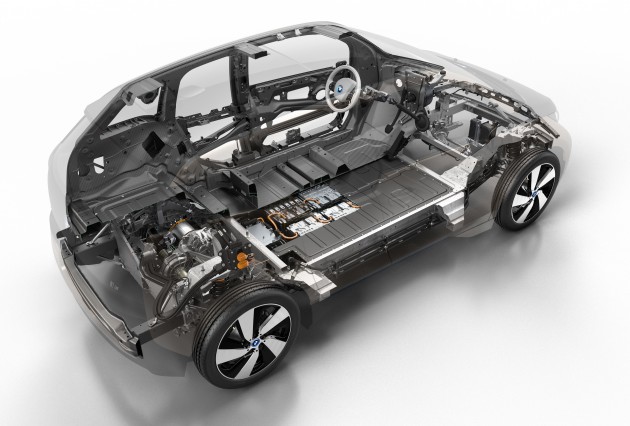




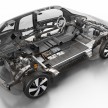

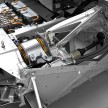
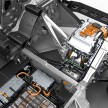
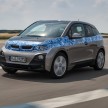
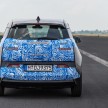
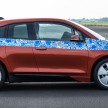
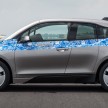

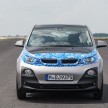
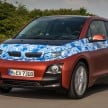
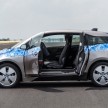
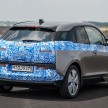
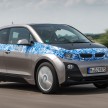







































Get the negatives out of the way, IMO, it doesn’t look good( yes its not fully reveal but the overall shape defines it all)it doesn’t have that BMW playboy handsomeness that BMW is known for, looking more like the face of someone chubby.
That out of the way, good points from what I know, I still like the design, it’s futuristic it’s different. I like it almost in the same way I like the pig-ugly-but-lovable Nissan Juke. It’s just oozes character. It maybe running in volts, but that performance Is quintessentially BMW, I have little doubt on its handling finesse since all that weight is low-low to the ground and between the wheels.
But the big thing that got me is the Carbon Fiber reinforce plastic shells. Its effect is ridiculously effective as all those race car have proof in not only performance but safety, just check Allen McNish 2011 Audi R18 crash, it may look apocalyptic, but those exploding pieces are energy diverted away from the driver in the cell. But it doesn’t take a car nut to know CFRP is some expensive stuff, the Alfa 4C is the 1st production car to use it and it cost £40k(quite a lot) for a 2 seater and even than it took alot if cost saving to get the price down to that level(see interior plastic). This is a larger, 4 seater car, so what is the price gonna be like? And if they manage to produce CFRP to lower price to below £50k for the car, that’s honestly gonna be seriously impressive stuff and a giant leap in modern car safety tech.
Sigh typed .con instead of .com.
The price is 37000 Euro, including 19% tax. So somewhere around 31000 Euro. Around RM 124k then. The rest is up to BMW and the government. How much profit, how high will taxes be for electric cars.
They do say they have worked very hard at reducing the cost of producing CFRP.
Wow, 37k Euro dosen’t sound too bad with all that much material and hardware tech. Amazing stuff, I hope CFRP will be the primary material for car bodies in the near future.
In my opinion electric cars should be taxless or minimum tax and no duty.
Leave normal cars tax and duty structure the way it is and give duty free for hybrid and electric platforms.
Well, while I wouldn’t leave the normal car tax and duty structure since it’s ridiculous (maybe cut into half, then it’s much more acceptable) I do think it’d be good to give electric cars and hybrids benefits. A tax free electric car would certainly make it much more attractive, and help the environment.
If BMW can really offer the i3 for 120k here then I think Malaysia will soon be full of BMWs.
Thats pretty disappointing range compared to the last years launched Tesla Model S which can go up to 500km without extender, and the lifting pedal breaking/recharging is copycat of them.
It’s a common concept with electric cars. I doubt Tesla was the first to do that.
Also, the now entry level Tesla Model S version has a 60 kWh battery, the bigger one 85 kWh. The BMW has 22 kWh… which will surely keep the price “low”.
You read the test in the NYT?
http://www.nytimes.com/2013/02/10/automobiles/stalled-on-the-ev-highway.html?ref=automobiles&_r=1&
That test was faked, The NYT had to apologize. The “journalist” drove in circles on the car park in a desperate attempt to get the battery flat, he drove way faster than he claims he did, etc. There is telemetry to back it up. Many others, owners and journalists have repeated the same journey and have had no issue whatsoever.
155/70R19.
Wow. Even a Myvi uses 175 tyres. That is like pretty skinny.
I guess it will be something like driving a bumper car, even in those as soon as you let go of the power pedal, it slows down.
Yeah. Good luck finding those in a tyre shop…
i thought the blue color on the body was a camouflage
It should be. They still don’t want to show the whole car. Why release press images then?! Maybe they’ve been drinking too much beer in their offices…
Thanks Paul, a good read. This article focuses mainly on the power train of the car, in which is amazing! But I’m wondering what are the safety kit will be once it’s fully launched.
Paul, since the motor and RE engine is at the back, what is in the front compartment if we popup the bonnet?
“..rear brake lights to come on even during recuperation..”
sometimes – just sometimes, i find it really annoying to some of those who are brake-happy drivers…even more so when the lane up front is clear and traffic is smooth and yet, the tail brake lights of them keeps on-off-on-off… *sigh* its just me, really.